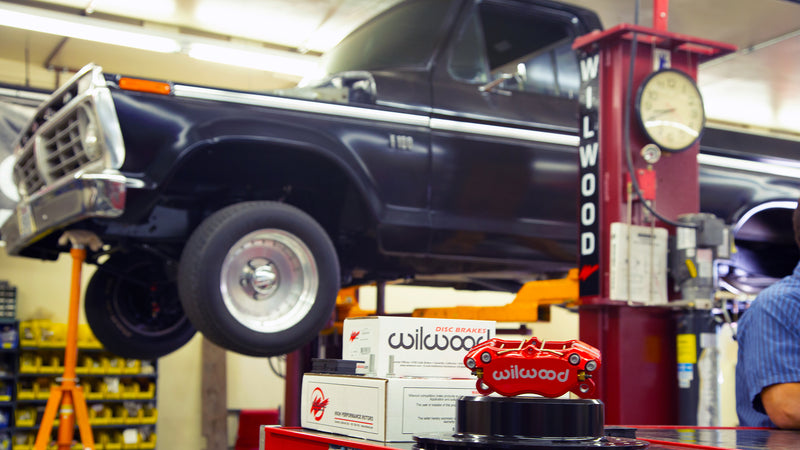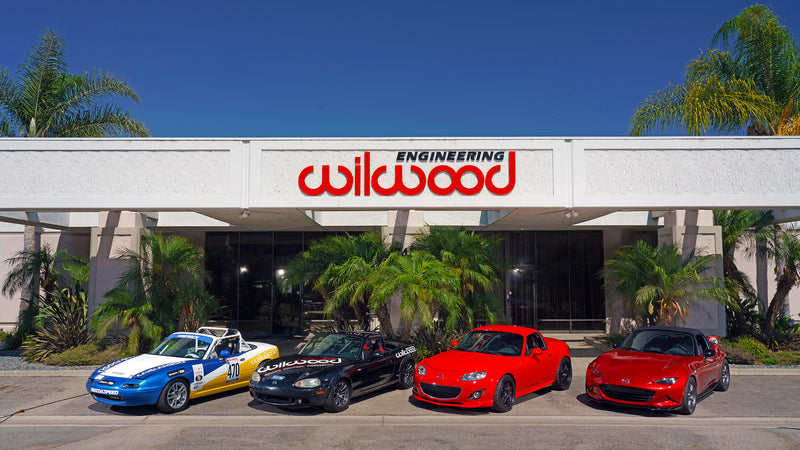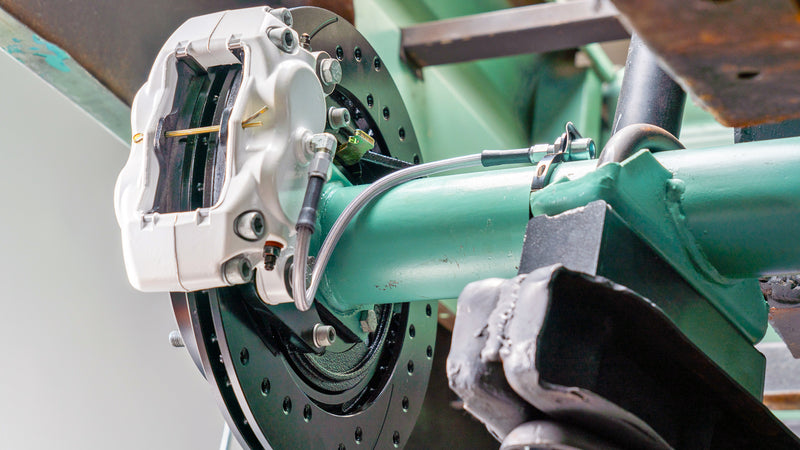
After Wilwood’s Workhorse Mustang was on the road, our R&D guys started itching to start a new project. A clean, rust-free, but otherwise unremarkable 1974 Ford F100 short-bed pickup truck was located and brought back to our shop, where it was promptly torn apart. It already had a healthy running V8, and we knew we would eventually build something better.

Phase One
Lowering a Ford truck with twin I-beam front suspension is a particular challenge, and Ford used that design in millions of light-duty trucks and vans, all 1965-96 F100/150, among others. You can lower the solid-axle leaf spring rear suspension without ruining the geometry easily enough in various ways: Axle flip, different springs, different shackles, and a C-notch in the frame. But, in the front, there are no “drop spindles” for I-beam trucks, and you can only lower them an inch or two with springs, which still messes up the camber and suspension travel. Camber can only be reset with heat and a heavy-duty hydraulic press to bend the axle.

If you want a low-riding Ford truck, you need to buy a set of fabricated I-beams with the dropped ride height designed into them. Because the twin I-beam front suspension is basically two crossed solid axles that pivot on the frame, the camber is baked in. The solid half of the axle causes the wheel to move in an arc as it travels because there is no pivot at the wheel.
While changing the I-beams, we also backdated the spindles to the earlier drum brake design. Why? Because the standard disc brakes from 1973 onward use a caliper mount integrated into the spindle. There is nowhere to bolt a caliper bracket. It is a relatively simple thing to backdate the spindles on 1973-79 trucks.
All the Wilwood kits for the 1965-72 Ford F100 can be found here.
We drove it like this for months, and it served as the real-world test for our Electronic Parking Brake rear kits. Ultimately, we were happy with how the truck would go and stop, but the leaf spring rear and twin-I-beam front suspension were best described as “agricultural.”

Phase Two
When making an old vehicle like this handle better, you start handicapped by the flexible nature of the frame. With the solid but primitive design of Ford’s twin I-beams, getting suspension geometry for good grip around corners is hopeless. Leaf springs can be made to behave, which is why they are still under most pickup trucks, but they can’t be made to handle while delivering a tolerable ride, a usable payload rating, and a fashionable ride height.
When we built the Wilwood Workhorse Ford Mustang, it started with calls to our favorite partners, like TCI and Strange, to see what they had developed for the first-generation pony car. We went a different route with the new truck, a more traditional way, like many of you probably do - we started in the junkyard with a camera and a tape measure. Our engineers started brainstorming and making lists and drawings.
We weren’t worried about brakes, but we were looking for modern suspension and steering, which would be heavy-duty enough for a pickup truck that might carry some cargo. A measuring tape revealed the last Ford Crown Vic had a 63.5” track width (with factory positive offset wheels), while the truck was about 64.5” - the modern car measures 67.5” hub to hub, which is wider than the truck, but manageable with the right wheel choice. The width of the frame where the cross member bolted was close enough to make it look easy!
The easy way to do things in the back would be a four-link with trailing arms, coil overs, and a built Ford 9”, but we wanted something better. The 1989-98 Ford MN12 platform was used under big luxury coupes, including the Ford Thunderbird, Mercury Cougar, and Lincoln Mark VIII, and it featured an independent rear suspension based around an 8.8” differential. The whole setup is housed in a subframe made of hydroformed steel held to the chassis by four bolts - moving the mounting points is easy if you have a welder.
Now a theme was coming together, and we started hunting for a suitable, all-Ford, drivetrain to swap in.
Here are the basic puzzle pieces:
- Body - 1974 Ford F100 “dent side” short bed pickup truck
- Motor - 32-valve DOHC Aluminum 4.6 liter V8 from Lincoln Mark VIII
- Supercharger - Eaton M-112 roots-type supercharger from 2004 Mustang Cobra
- Transmission - 4-speed automatic Ford 4R70W
- Front Suspension - Independent a-arms, crossmember, steering, and spindles from Ford Crown Victoria Police Interceptor
- Rear Suspension - Independent rear suspension and limited slip differential from MN-12 Ford Thunderbird
Follow our social media and check back here for all the details and photos when we reach completion of this build.



Sounds great. What would something like this project cost?
Thanks.